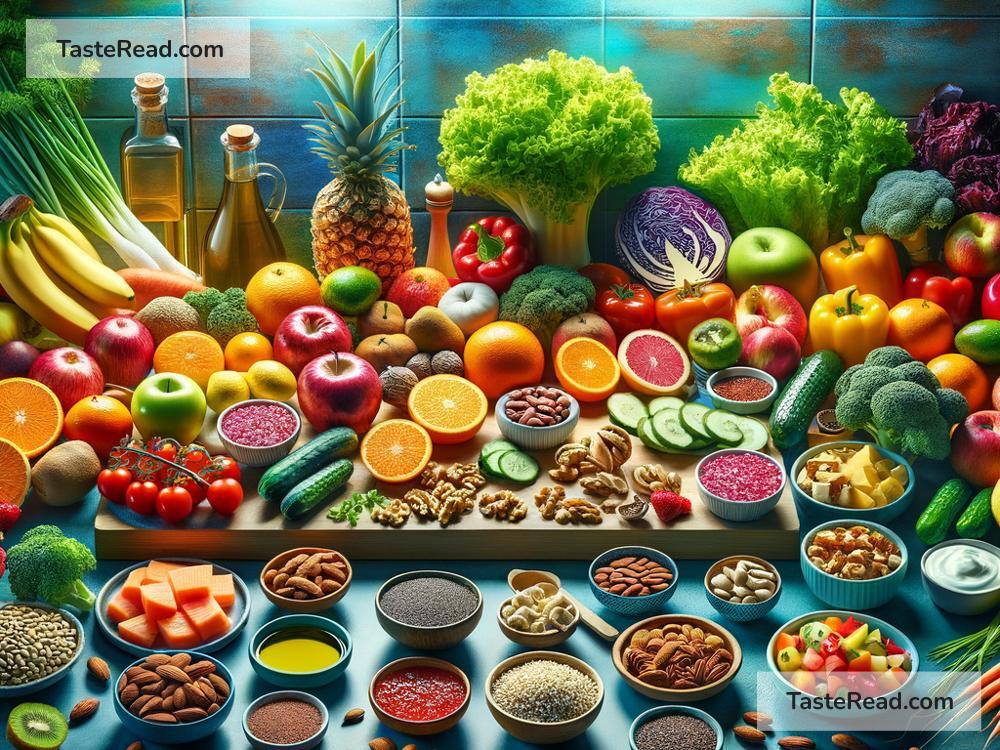Eating Smart: Foods That Improve Your Dietary Patterns
It’s no secret that what we eat greatly impacts our overall health and well-being. But sometimes, figuring out exactly what “eating healthy” means can feel overwhelming. With so many food options and advice out there, how do you make positive changes to your diet that stick? The good news is that improving your dietary patterns doesn’t have to be complicated or expensive. By focusing on a few key foods and habits, you can build a solid foundation for better eating. In this blog, we’ll explore simple and accessible foods that can help improve your diet and enhance your health over time.
1. Start With Whole, Unprocessed Foods
When it comes to improving your diet, the best place to start is with whole and minimally processed foods. These foods are packed with vitamins, minerals, and other nutrients that support your health. Examples include fresh fruits and vegetables, beans, nuts, seeds, whole grains, and lean proteins like chicken, fish, or eggs.
Whole foods are great because they tend to be lower in added sugars, unhealthy fats, and artificial ingredients that are often found in processed snacks or fast food. Think of whole foods as nature’s gift to your body—they’re simple, satisfying, and nutrient-dense.
2. Add More Fruits and Vegetables
Fruits and vegetables are nutritional powerhouses. They’re loaded with fiber, vitamins, and antioxidants that protect your body from diseases and keep you feeling energized. Dietitians often recommend aiming for a “rainbow” of colors on your plate, which means eating a variety of fruits and veggies.
Here are a few easy ways to eat more fruits and vegetables:
– Snack on carrot sticks, apple slices, or grapes instead of chips.
– Add spinach or kale to smoothies for extra greens.
– Include a side salad with your lunch or dinner.
– Throw diced vegetables into your soups, omelets, or stir-fries.
If fresh produce feels pricey or hard to access, frozen or canned options (without added sugar or salt) can be great alternatives.
3. Choose Whole Grains Over Refined Grains
Refined grains, like white bread, white rice, and sugary cereals, lose much of their natural nutrients during processing. On the other hand, whole grains like oats, brown rice, quinoa, and whole wheat bread retain their fiber and nutrients, making them a better choice for a healthy diet.
Whole grains help you feel full longer and maintain steady energy levels throughout the day. They also support digestion and lower the risk of heart disease and diabetes. To make the switch, replacing white bread with whole-grain bread or trading white rice for brown rice are easy swaps that make a big difference.
4. Incorporate Healthy Fats
Not all fats are bad! Healthy fats are actually essential for your body. They support brain health, keep your skin glowing, and help your body absorb certain vitamins. Foods rich in healthy fats include:
– Avocados
– Nuts like almonds, walnuts, or cashews
– Seeds like chia or flaxseeds
– Olive oil or coconut oil
– Fatty fish like salmon or mackerel
Try drizzling olive oil over your salad, adding sliced avocado to your sandwich, or snacking on a handful of nuts for a quick boost of good fats.
5. Don’t Forget Protein
Protein is a building block for your muscles, organs, and tissues. It helps repair cells and keep your energy steady throughout the day. High-quality sources of protein include lean meats, fish, eggs, tofu, beans, lentils, and dairy products like yogurt and milk.
For plant-based options, nuts, seeds, chickpeas, and soy products can provide excellent protein without relying on animal sources. If you’re looking for a simple way to include protein, adding beans to your soup or a boiled egg to your salad is a great start.
6. Stay Hydrated
While not technically a “food,” water is essential to your dietary pattern. Many people don’t drink enough water throughout the day, leading to fatigue, digestive issues, or even overeating (since thirst can sometimes be mistaken for hunger). Aim for at least 8 glasses of water per day, and more if you’re active or live in a hot climate.
Unsweetened beverages like herbal teas or sparkling water are good alternatives for variety. Avoid sugary drinks like soda and energy drinks, which can contribute to weight gain and other health problems.
7. Limit Added Sugar and Salt
One of the easiest ways to improve your diet is by cutting back on added sugars and salt. Excess sugar contributes to weight gain and increased risk of diseases like diabetes, while too much salt can lead to high blood pressure.
Start small—use less sugar in your coffee, avoid salty snacks, or cook more meals at home where you can control the ingredients. Look for alternatives like spices, lemon juice, or herbs to enhance flavor without relying on sugar or salt.
8. Plan and Prep Your Meals
Finally, making healthier dietary choices often starts with good planning. Preparing meals in advance ensures that you have nutritious options ready and prevents you from reaching for less healthy convenience foods. You can batch-cook meals for the week or prep simple ingredients like boiled eggs, chopped veggies, or cooked grains to save time.
Conclusion
Improving your dietary patterns doesn’t have to be overwhelming. Focus on whole, nutrient-rich foods, and make small changes step by step. Adding fruits, vegetables, whole grains, healthy fats, and proteins to your meals can lead to big benefits for your energy and health. Pair these choices with staying hydrated and cutting back on sugars and salts, and you’ll be on the path to healthier living.
Remember, every small step counts. Try new recipes, enjoy your food, and celebrate the positive changes you’re making for your body. Healthy eating isn’t about perfection—it’s about progress!


